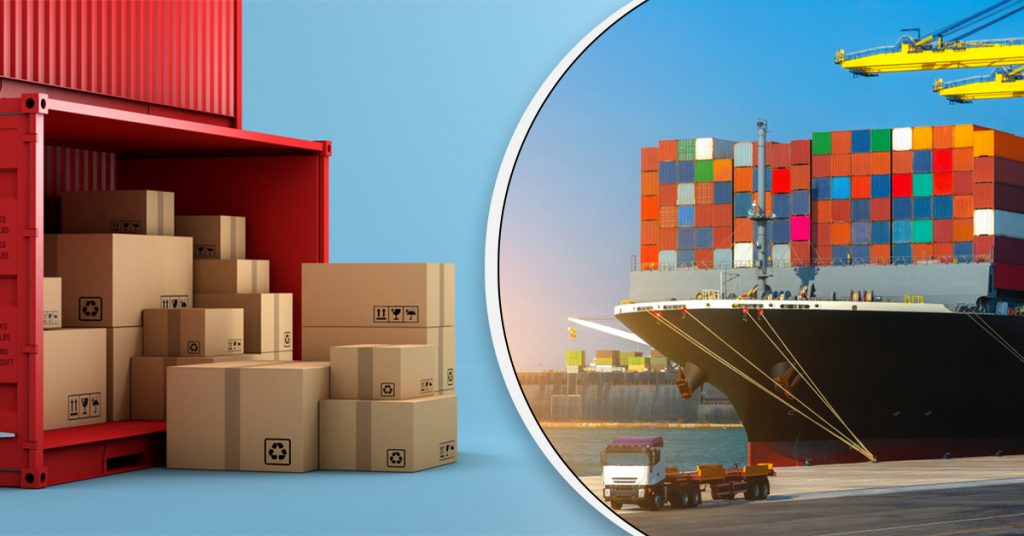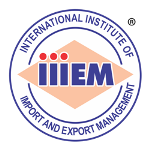
Have you heard of RoDTEP? It’s like a special treat for Indian exporters! RoDTEP, which stands for Remission of Duties or Taxes on Export Products, was introduced by the Indian government to make exporting goods more profitable. The scheme was implemented on January 1, 2021.
The main goal of RoDTEP is to help exporters by giving them a rebate on various taxes and duties they have to pay when they export their products. These taxes and duties are like hidden costs that can make exporting less profitable. The scheme covers not only the direct expenses but also the cumulative indirect taxes that are part of the whole production and distribution process.
In simple terms, RoDTEP compensates for all the taxes and levies, whether they are imposed by the central government, state government, or local authorities, that exporters have to bear. This means more money in the pockets of our hardworking exporters. So, let’s find out more about this scheme and the types of taxes it covers!
Some examples of these taxes include:
- VAT and Excise duty on fuel used in self-incurred transportation expenses, electricity generation from power plants or DG Sets, and machinery/plant operation.
- Electricity duty on purchased electricity.
- Mandi Tax, Municipal Taxes, Property Taxes.
- Stamp duty on export-related documents.
RoDTEP aligns with the principles of the World Trade Organization (WTO) by ensuring that taxes and duties should not be exported with the goods. Instead, they should be exempted or remitted to exporters, making the products more competitive in the global market. The Department of Revenue administers the RoDTEP Scheme, with its implementation overseen by customs authorities. This scheme has been in effect for exports since January 1, 2021.
Objectives of the RoDTEP Scheme
Let’s break down the purpose of the RoDTEP Scheme in simple terms. Imagine you’re a business selling products overseas. Sometimes, there are hidden taxes and duties on these products that you have to pay—the RoDTEP Scheme steps in to make things easier.
What does RoDTEP do?
RoDTEP refunds the taxes and duties you paid on your products, including the indirect taxes on the materials used to make them. It also covers the taxes you pay when your products are distributed.
What RoDTEP doesn’t cover?
RoDTEP doesn’t give refunds on taxes that were already exempted or credited.
In a nutshell, RoDTEP makes exporting goods simpler and more profitable by giving businesses a refund on certain taxes and duties. It’s like getting a little help to make global trade smoother!
Operating Principles of the RoDTEP Scheme
Let’s uncover the key principles of the RoDTEP Scheme in an easy-to-understand way:
1. Setting the Rates: A committee in the Department of Revenue, along with experts and government departments, will decide the maximum refund rates for different sectors prioritized by the government.
2. Budget Decisions: The Ministry of Finance, in consultation with the Department of Commerce, will decide the overall budget for the RoDTEP Scheme, considering all relevant factors.
3. Yearly Framework: The scheme will work within a yearly budget framework. Adjustments will be made as needed to ensure that the planned refunds for each year fit within the approved budget. No past dues or uncertain liabilities can be carried over to the next year.
4. Sector Decisions: The Department of Commerce will decide when and how the scheme applies to different sectors, the level of benefits, and the overall budget allocation in consultation with the Department of Revenue.
5. Rebates and Rates: Eligible exporters will receive rebates as a percentage of the product’s value (FOB), and there might be a maximum limit per unit. For certain items, a fixed rebate amount per unit may be set. The specific rates and limits will be provided in Appendix 4 R. Rates may be reviewed annually, well in advance of each financial year.
6. Export Proceeds: The rebate is granted regardless of when export proceeds are received. However, safeguards will be in place to prevent misuse due to non-receipt. Similar measures to those used in the Drawback Scheme and other GST refunds will also apply.
7. Digital Rebates: Rebates will be issued digitally in the form of a transferable duty credit or electronic scrip (e-scrip). This digital ledger will be maintained by the Central Board of Indirect Taxes & Customs (CBIC). The CBIC will set the rules and procedures for RoDTEP claims, application processes, timeframes, export documentation, and more. This process will be carried out on an IT-enabled platform to ensure end-to-end digitization. The CBIC will also address matters related to the recovery of rebates when foreign exchange is not realized, suspending or withholding rebates in cases of fraud, misuse, and penalties.
In simple terms, RoDTEP is a scheme to refund certain taxes on exports, and it’s managed in a digital, efficient way to benefit exporters and protect against misuse. It’s all about making international trade smoother and more beneficial for everyone involved.
Features of the RoDTEP Scheme
Have you ever wondered why some Indian products are more expensive in the global market? It’s because of the hidden taxes and duties that add to their final price. To help Indian exporters offset these extra costs and become more competitive worldwide, the Indian government introduced the RoDTEP Scheme. Let’s dive into what this scheme offers:
1. Refund of Hidden Taxes and Duties
The RoDTEP Scheme is all about giving exporters a refund on various taxes and duties that often go unnoticed. This includes:
- Taxes at the Central, State, and local levels that exporters pay on their products.
- Indirect taxes on goods and services used during the production and distribution of export products.
For eg: think about the taxes on the fuel used for transportation, the electricity needed for manufacturing, or the various taxes on import-export documentation. These are the kinds of costs that the RoDTEP Scheme is designed to refund. It ensures that exporters only export their goods and services, not the taxes they’ve paid.
2. WTO-Compliant Scheme
RoDTEP complies with the standards set by the World Trade Organization (WTO). This is great news for Indian exporters because it means that their products meet international standards. It also makes their goods more cost-competitive in the global market, which can boost exports.
3. Covering All Sectors
The RoDTEP Scheme isn’t just for one specific industry. It covers a wide range of sectors, including textiles. This broad coverage ensures fairness across all areas. However, some sectors like steel, pharmaceuticals, and chemicals are not included in the scheme’s benefits.
In a nutshell, the RoDTEP Scheme is here to make Indian products more competitive globally by refunding hidden taxes and duties. It’s a win-win for exporters and the Indian economy as a whole!
Ineligible Supplies/Items/Categories Under The RoDTEP Scheme
Let’s make it crystal clear what doesn’t fit under the RoDTEP Scheme:
- If you’re exporting goods that were originally imported for export purposes, they won’t be eligible for RoDTEP rebates.
- Exports originating from a third country but passing through India (trans-shipments) aren’t covered.
- Products subject to minimum export prices or export duties won’t qualify.
- Items that fall under the “Schedule-2 of Export Policy in ITC (HS)” and are either restricted or prohibited for export are excluded.
- Products that are deemed exports aren’t eligible.
- Goods made in domestic tariff areas (DTA) and supplied to special economic zones (SEZ) or free trade and warehousing zones (FTWZ) are not covered.
- Items made in Electronic Hardware Technology Parks (EHTP) and Bio-Technology Parks (BTP) don’t qualify.
- Goods fully or partly manufactured in a customs warehouse aren’t eligible.
- If products are manufactured or exported to meet an export obligation under certain duty exemption schemes, they won’t get RoDTEP benefits.
- Items manufactured or exported by units licensed as 100% Export-Oriented Units (EOU) aren’t covered.
- Products from units in Free Trade Zones, Export Processing Zones, or Special Economic Zones don’t qualify.
- Exports that benefit from Notification No. 32/1997-Customs dated April 1, 1997, aren’t included.
- Exports from ports that don’t use electronic documentation in ICEGATE EDI are excluded.
- Goods that have been used after manufacture aren’t eligible.
Additionally, please note that the Government of India can change the eligibility of these categories under the RoDTEP Scheme at a later date. So, it’s good to stay updated on the latest developments!
Rebate Nature in RoDTEP Scheme: What’s It All About?
Let’s unravel what kind of rebate you get under the RoDTEP Scheme. According to Para 4.56 of the Foreign Trade Policy, here’s the deal: The rebate, in the form of e-scrips, can only be used to pay a specific kind of customs duty. It’s the Basic Customs Duty, and you can find it in the First Schedule to the Customs Tariff Act, 1975.
Keeping Things in Monitoring and Audits in the RoDTEP Scheme
Para 4.57 of the FTP lays out the plan for keeping tabs on the RoDTEP Scheme. Here’s what you need to know:
1. Record Keeping: As an exporter, you’ll need to keep records that back up your claims under the RoDTEP Scheme. These records are vital for audits and verifying the duty credit/eScrip you’re claiming.
2. IT-Powered Risk Management: The CBIC and the Department of Revenue are putting an IT-based Risk Management System (RMS) in place. It’ll help them physically check exporter records, but they won’t check everyone. They’ll pick samples objectively based on factors like risk and other relevant details.
To make sure everything is on track, Para 4.57A sets up a broader monitoring system. They maintain and regularly check an Output Outcome Framework to keep an eye on how the RoDTEP Scheme is working.
So, the RoDTEP Scheme is well-monitored and kept in check to ensure it benefits exporters as intended!
In conclusion, understanding the ineligibility criteria under the RoDTEP Scheme is crucial for exporters. It ensures you make the most of the scheme’s benefits. Remember that the Government of India may update these criteria, so staying informed is essential. For those interested in exploring the world of import-export and gaining in-depth knowledge, consider enrolling in iiiEM – the best Import-Export Certification Courses. They provide valuable insights, ensuring you are well-equipped to navigate the international trade landscape successfully. With the right knowledge and tools, you can take your export-import business to new heights.
